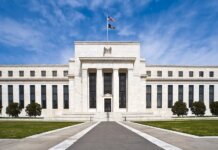REQUIRED READING: John K. McIlwain has seen the future of housing – and it doesn't look anything like the past.
McIlwain, a senior resident fellow at the Urban Land Institute, is the author of ‘Housing in America: The Next Decade,’ a report that describes a near-term future where a slow recovery from the recession, coupled with growing disillusionment with homeownership and shifting demographics, will result in a very different environment.
‘The old 'normal' will not return,’ says McIlwain. ‘Over time, a new mode of metropolitan development will emerge, presenting opportunities and stiff challenges. Those who fail to understand these new trends will find themselves building what is no longer in demand.’
However, McIlwain is not necessarily mourning the passing of the old ‘normal.’
‘For the economist part of me, I think it is good,’ he says. ‘Housing costs were high, and there were affordability challenges. Overall for the economy, it is good. The housing bubble and crash were not healthy for anybody.’
McIlwain's report concludes that overall home prices should decline an additional 10% this year, exacerbating the existing problems with underwater mortgages and foreclosures. Due the weak economy and problems in the housing market, he believes there will be a shift away from the traditional concept of homeownership as both the American dream and a solid investment. As a result, McIlwain predicts that homeownership rates will fall from their current 67% rate to 62% – though he stresses this will actually bring the market back to where it belongs.
‘It is important to understand that from 1960 to 1990, the homeownership rate was between 62 percent and 64 percent,’ he explains. ‘That was a healthy period in our economy. Only in the 1990s, when both Republican and Democratic administrations pushed homeownership, that it went up to 69 percent, resulting in housing prices that were way above the values they should have been.’
McIlwain adds that the push for renewed homeownership will be at a low-key level for the foreseeable future. ‘Going forward, there will be much more conservative financing for a while,’ he says. ‘We will not see the same kind of government emphasis on homeownership.’
‘Housing in America: The Next Decade’ pinpoints four key demographic waves as reshaping the housing market. First, aging Baby Boomers (between 55 and 64 years old) who are homeowners will be forced to stay in their properties in order to see evaporated home values return. This group will also put off retirement and continue working longer than earlier generations of senior citizens.
The younger Baby Boomers (between 46 to 54 years old) that own homes have a different problem: Flat incomes and diminished home equity cancel their ability to purchase second homes, thus shrinking the second-home market even further. The so-called Generation Y is, by all accounts, less interested in homeownership and more open to renting. McIlwain does not see this demographic as helping the market recover.
However, McIlwain sees the nation's immigrants venturing into the housing market. He believes this can help rebuild troubled markets in California and Arizona, and he notes the proliferation of Spanish-language home advertising as a tool to bring in these potential buyers.
‘Immigrants have shown a natural progression in this area,’ he says. ‘After 10 to 15 years in this country, many of them begin to move into homeownership.’
One sector of the mortgage banking industry that appears to be in flux, he adds, involves reverse mortgages. McIlwain believes it is possible for this growing sector to continue moving forward, although there is a significant pothole in its road.
‘There are still not a lot of people who understand the product,’ he observes. ‘It is entirely possible for growth if the products are competitive. But there is a problem: Housing prices dropped, and a lot of equity disappeared. By end of this year, the potential market may decline.’
According to McIlwain, the housing market's stability will depend on the revival of the private mortgage finance system. He acknowledges that reducing the federal government's role in the market will require either revamping or replacing Fannie Mae and Freddie Mac while tightening risk requirements for mortgage issuers, thus enabling investors to renew their confidence in mortgage-backed securities. However, he warns that this will not happen until housing prices stabilize.
‘We need to find a real solid bottom on the housing market,’ he says. ‘The earliest for that will be either the end of this year or next year.’
Â
‘Housing in America: The Next Decade’ is available from the Urban Land Institute.











